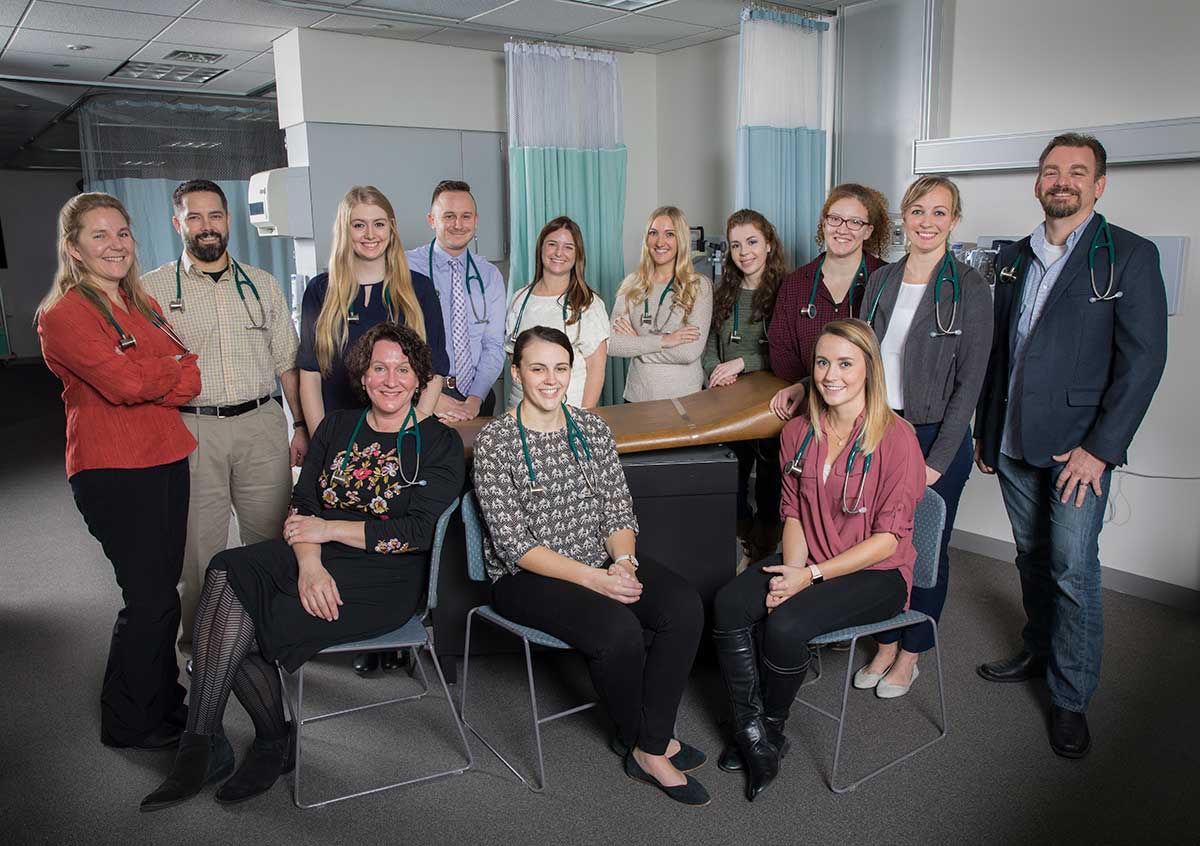Binghamton nursing faculty work to fill the growing need for rural healthcare providers
Program aims to keep rural nurse practitioners in rural areas

Many rural inhabitants, including the elderly and disabled, would rather avoid a visit to the doctor’s office than face an hour (or more) drive to get there. That drive time can increase drastically for specialist care.
This is a predicament across America. And in rural areas like upstate New York, where there is a serious deficiency in medical healthcare providers per capita, the problem is only growing.
To help combat it, Binghamton University’s Decker School of Nursing faculty members Nicole Rouhana, MS ’95, PhD ’11, and Pamela Stewart Fahs, MS ’85, co-wrote a grant application to the Health Resources and Services Administration’s ANEW program. When the grant was accepted, Decker received $1.2 million.
The Advanced Nursing Education Workforce (ANEW) program helps support nursing students by funding them to practice clinical training in rural settings. The grant allows Decker to place nursing students in rural areas of central and southern New York, as well as northern Pennsylvania.
Rouhana, the program’s project director, manages the funding stream, evaluates and determines outcomes of the grant and ensures students have the clinical resources they need to succeed.
Together with Frances Munroe ’81, MS ’90, she visits students on-site and checks in with preceptors — on-site instructors — to examine student progress. Rouhana says the number of healthcare providers moving from rural areas to urban centers is a huge issue in Binghamton’s surrounding regions.
“There’s not a lot to attract them to this area,” says Rouhana, director of graduate nursing programs and assistant professor of nursing. “It’s not just that the population is getting older and sicker; there’s also a growing shortage of healthcare providers.”
Munroe, the program’s clinical faculty liaison and a clinical assistant professor of nursing, agrees with Rouhana. She trains graduate nurse practitioner students, including those in the ANEW program, and communicates frequently with the scholars and their preceptors. With New York’s aging population, she says the program is addressing an increasing need in rural communities.
“We have great need for more rural nurse practitioners,” Munroe says. “The problem has existed for a while, but now it’s growing.”
This acknowledgement led Rouhana and Fahs, the program’s rural consultant, to consider “homegrown” nurse practitioners as a possible solution. The ANEW program sends Decker students who are originally from rural areas to practice in places where they can learn and adapt their knowledge to better provide healthcare to rural communities, which Fahs says can be challenging.
“You’re more of a generalist in rural areas,” says Fahs, associate dean and director of PhD programs at Decker. “You have to know a little bit about everything, what I term the ‘consummate generalist.’”
Fahs is also Decker’s Chair in Rural Nursing and editor-in-chief of the Online Journal of Rural Nursing and Health Care. She hopes sending rural students to practice in rural areas will help convince them to stay there after they graduate.
This seems to have worked with ANEW scholar Daniel Babcock, who is clinically placed in Norwich, N.Y.
“After graduation, I plan to practice rural primary care in Chenango County or Delaware County, serving the communities I grew up in,” Babcock says.
Taking telehealth to rural communities
The ANEW program’s next initiative is to integrate telehealth technologies into some of the practices. Ann Fronczek, MS ’99, the program’s telehealth and nursing education consultant, says rural areas need telehealth due to a lack of specialized healthcare providers and because of difficulties caused when patients are forced to travel long distances for health issues.
“We’re trying to enable some of the more remote sites with technology they’ll actually be able to use for practice or to support education of nurse-practitioner students,” says Fronczek, an assistant professor of nursing.
Telehealth is a broad genre that involves using telecommunications technologies to provide healthcare and can allow practitioners to conduct “visits” in which patients remain in the comfort of their own homes. For example, patients can use an electronic stethoscope (at the direction of the practitioner) among other medical tools. They can also communicate with a specialist located in another city from their local practitioner’s office, using immediate, real-time interaction technology.
Fronczek says patients trying telehealth for the first time are skeptical, but are amazed at how much they can do, even though some argue that telehealthcare reduces the connection between nurse practitioners and their patients.
“It doesn’t have to be a loss,” she says. “It’s just a rethinking of nursing care. The communication skills don’t really change; it’s just the fact that you’re adding technology into the process.”
Telehealth capabilities counteract the need for patients to make long trips to healthcare facilities and allow practitioners to more effectively communicate with specialists, using Skype-like functions to get opinions instantly.
“It’s the way of the future,” Rouhana says. “You have to offer easy access for your patients.”
The grant has been so successful that the program has been given a third year of funding.
The program’s next steps include a podium presentation at the Rural Nursing Organization’s International Rural Nursing Conference and the implementation of telehealth technology to rural sites in the program.
“We believe nursing is both a science and an art,” Rouhana says. “There is a way to combine the digital aspects with physical connections to provide the best care for the patient.”

